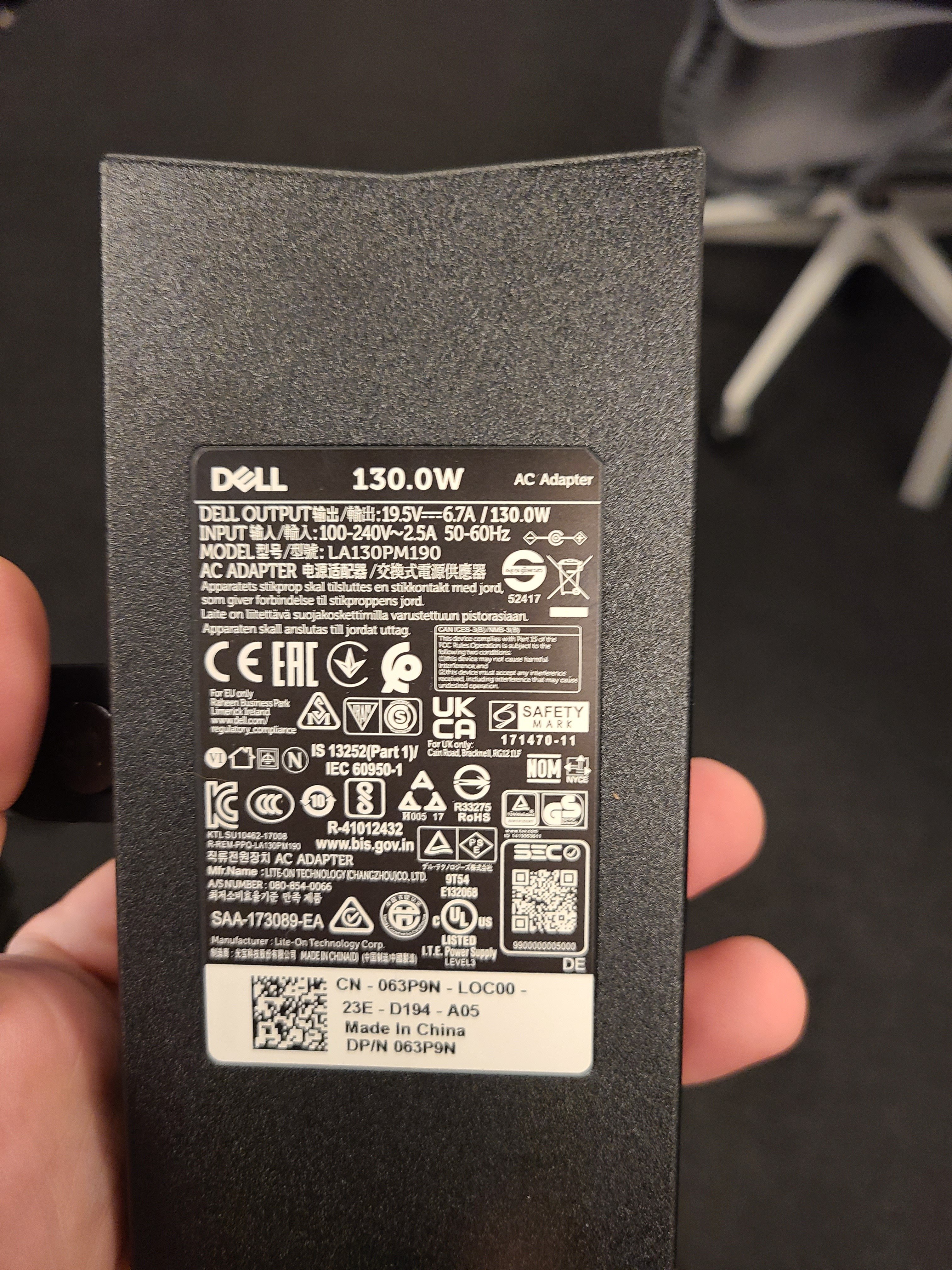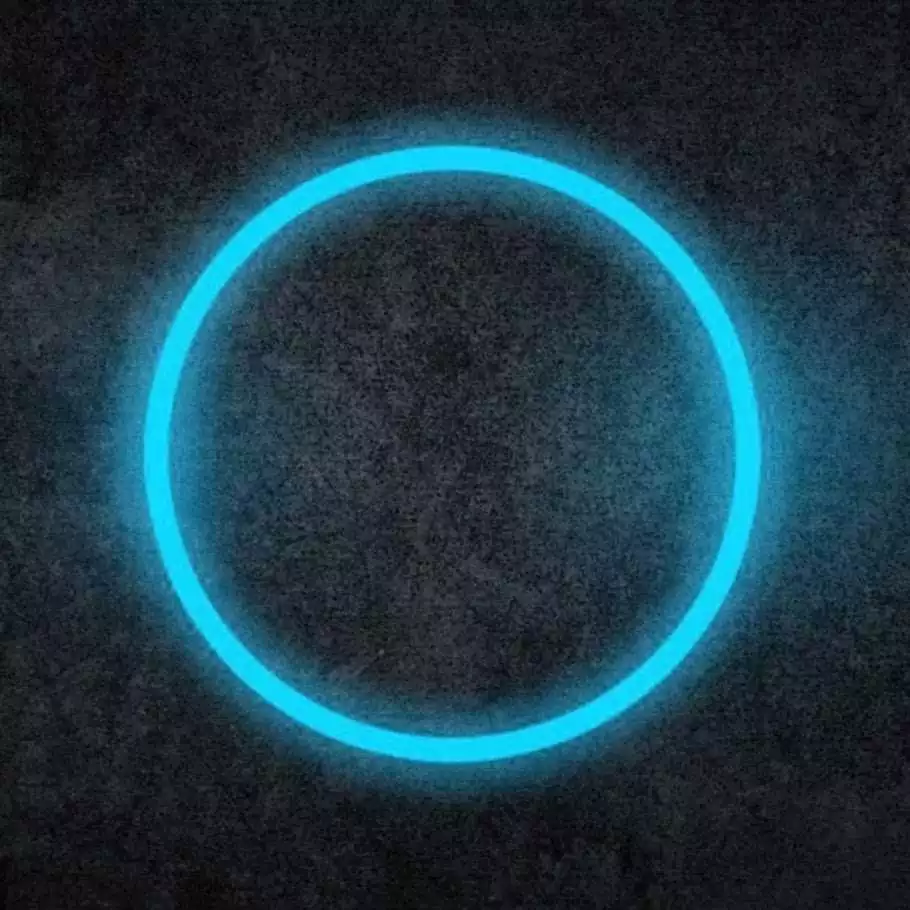Dell G15 (5510)
On the Dell website it says has one option that says 240W (the one I was using is 180.0 W) is compatible with mine but for $140 I want to be 100%
Also my old one shocked the shit out of me because it was frayed and I had no idea so I want to be 1000% sure so I don’t get accidentally shocked again.
any wattage above what it asks for on the new devices is fine, won’t hurt. less wattage won’t charge fast enough and it will complain. 65w is pretty standard for 14" laptops, 90w is recommended and will work on more devices in case you have one that requires 90w, usually 15.5" screens or larger, 130-180w for docks and gaming laptops. 240w for special scenarios. pick your poison, don’t go unbranded shitty universal ones, get a good genuine oem adapter, the 90w runs about $40 new on Amazon, 65w $22
LPT: if buying a new laptop, only get one that can charge via USB PD. If it can charge with a proprietary charger in addition, that ok.
Otherwise you are going to be in OP’s situation
Let me see if one of my dell spares works for you, I was gonna toss them
If you have a match throw it on eBay and I’ll buy it
I think I have one I’ll know tomorrow
A LTT video recently mentioned, often it’s cheaper to buy a broken laptop that uses the same charging cord just for the cord than to buy the charging cable directly. But there’s always some hassle second hand even if it is much cheaper.
$140 sounds absurd for just a charger. I’d definitely but secondhand and maybe off-brand.
A quick google search gives me options for €40/€50. But I don’t know if they match exactly.
If they don’t match exactly, the laptop will lock you into power saving mode or battery operation only. Real John Deere vibes.
A laptop charger.
Do the sockets fit? Going from 180 to240w should be fine. As long as the expected voltage match on the brick’s supply it should be fine to go higher in wattage.
In terms of wattage, it’ll only draw the current it needs.
In any case you can probably find a 3rd party brick that works just fine for way less. If you have a microcenter near you, they can help. Or there’s always crapazon.
Junk the laptop and buy one that uses USBC.
That shit should have stayed in the 2010s.
At the time that laptop was released, USB-C couldn’t charge more than 100W. If that thing needs a 180W charger, USB-C simply wasn’t an option. The power delivery spec allows more these days, but that won’t help older models.
i’m about over laptops in general.
Removed by mod
 . Thought I posed but this?
. Thought I posed but this?Any cable that gets frayed could shock you, so to avoid getting shocked, stop using the cable before it rubs though to the metal. Getting a more heavy duty cable can help, but any cable will rm eventually wear through.
Your current adapter should have the wattage on it - buy the same. If you no longer have it, you can search yoir laptop by the service tag on the Dell Support page (it should detect it, if not the service tag is on a label on the bottom cover) and check the configuration there - it should have the original adapter listed. Buy the same.
If in doubt, just buy the 240W as that should work even if it used 180W.
Things to look for:
- size and shape of the plug that goes into the laptop and the charging port on the laptop
- voltage & amperage: the chargers output voltage must be the same, the amperage must be equal or higher but never below the required amperage otherwise stuff starts to get warm and may potentially get too hot
- read your laptop chargers label
Or if you don’t have a charger read the laptop specs
It’s recomended you get a manufactory one that’s made for your laptop which you should be able to Google, make sure you’re not getting fake chargers either because those can cause house fires
output voltage must be the same
Or check what the laptop accepts. Sometimes it is a range.
Dell is really crappy about third party chargers. When you get one of their laptops, you are stuck in their ecosystem. They used to do this with memory as well… then they didn’t… then they did again. Don’t know which phase they’re on right now, but I’d dig on eBay or Craigslist for an exact replacement.
I got my hands on a Dell USB C docking station for free, it’s all good except that the power supply is missing.
Looking for a replacement I found the same docking station for sale cheaper than what I would have to pay for the cable.
Man, fuck Dell.
I typed in the serial number of my charger and it only gave one search result total. An item on eBay that was out of stock. It really sucks because I doubt I could sell my entire laptop for $140 since it’s so old. Oh well
Is it just the frayed wires that’s causing the issue? Did they short together to destroy the charger?
yea it’s the frayed wire, i didn’t test it after I got shocked, I threw it away. I imagine the box part is fine but the part that plugs in the wall is frayed
what? dells are all USB c or 7mm barrels, at least for commercial/business equipment.
There are also 4.5mm barrels occasionally
That’s true, but they use nonstandard voltages on their chargers, and it can be tough to find an aftermarket that matches both the voltage and current of stock. Then you run into the “Dell has detected a non-Dell charger” scenario.
yeah, I’ve seen that too. that’s why I say avoid aftermarket, get brand genuine match
Ic it wasn’t obvious already, don’t use chargers with damaged cables. Even if the shocks aren’t bd enough to get you to stop, the fire risk of sending 180W through a damaged cable is probably not worth it.
If you buy a cheap, off brand charger, keep an eye on it while it’s plugged in. I’ve seen several models catch fire. This was a problem in the 60W charger era, and it’s only gotten worse.
Some laptops allow faster charging than what the charger they came with can provide, and their chargers can usually power more than other models need. The 180W charger that came with your laptop is enough, no need to spring for the 240W. Unfortunately, at the time this laptop came out, there was no way for a standard like USB to provide this much power, so you’ll have to stick with a Dell charger. You can try buying similar “for parts” laptops off the internet if you want to get a good deal.
When I doubt about compatibility, you can always check the online manual for recommended part numbers, or call Dell to ask. I don’t think there’s that much variety in Dell chargers these days.
If you want to be sure not to get shocked again, buy a new one and be careful not to damage it. Hard to tell what state second hand chargers are in.







